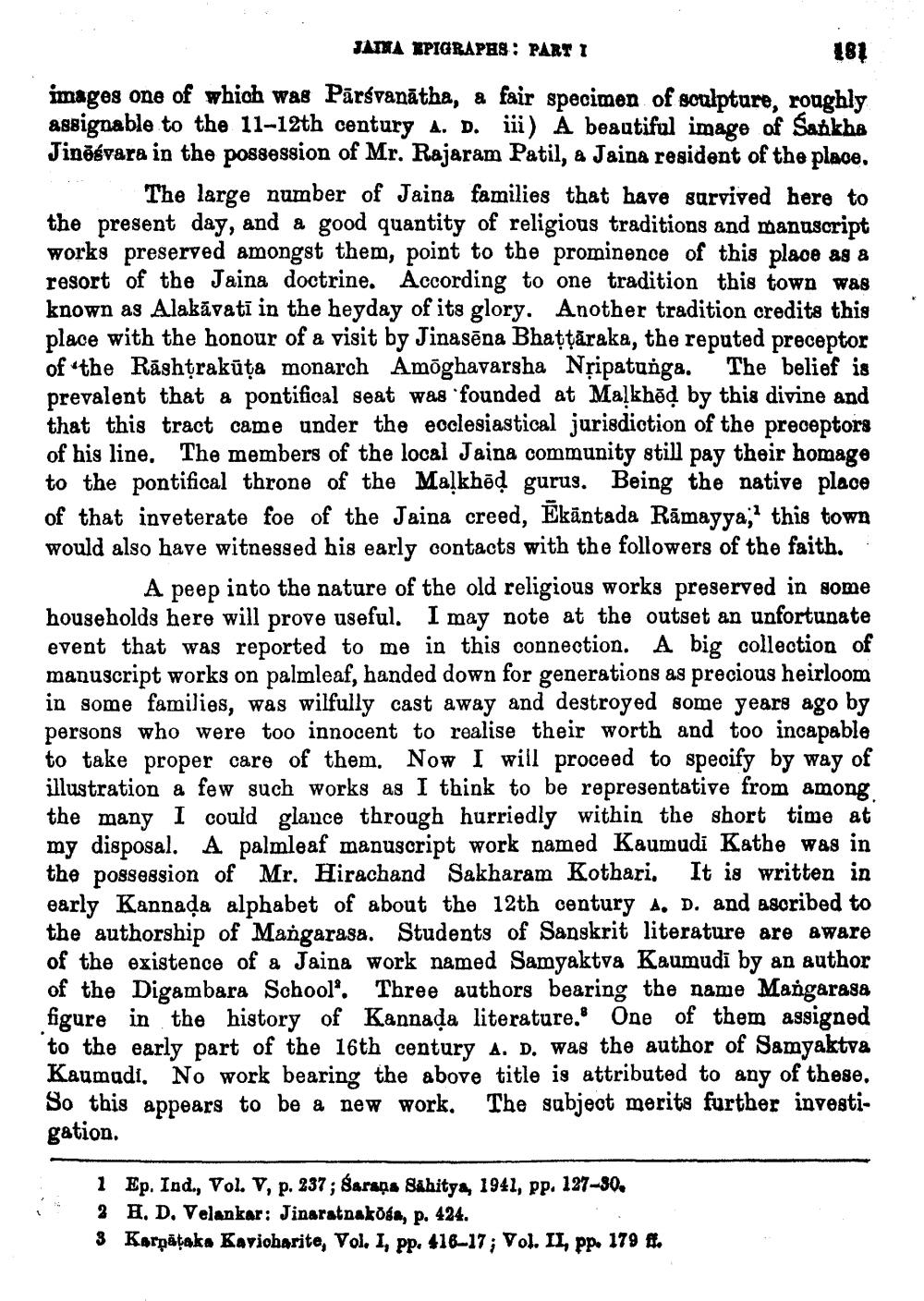________________
JAINA EPIGRAPHS: PART I
181
images one of which was Pārsvanatha, a fair specimen of sculpture, roughly assignable to the 11-12th century A. D. iii) A beautiful image of Sankha Jinesvara in the possession of Mr. Rajaram Patil, a Jaina resident of the place.
The large number of Jaina families that have survived here to the present day, and a good quantity of religious traditions and manuscript works preserved amongst them, point to the prominence of this place as a resort of the Jaina doctrine. According to one tradition this town was known as Alakāvati in the heyday of its glory. Another tradition credits this place with the honour of a visit by Jinasēna Bhaṭṭāraka, the reputed preceptor of the Rashtrakuta monarch Amōghavarsha Nṛipatunga. The belief is prevalent that a pontifical seat was founded at Malkhod by this divine and that this tract came under the ecclesiastical jurisdiction of the preceptors of his line. The members of the local Jaina community still pay their homage to the pontifical throne of the Malkheḍ gurus. Being the native place of that inveterate foe of the Jaina creed, Ēkāntada Ramayya,' this town would also have witnessed his early contacts with the followers of the faith.
A peep into the nature of the old religious works preserved in some households here will prove useful. I may note at the outset an unfortunate event that was reported to me in this connection. A big collection of manuscript works on palmleaf, handed down for generations as precious heirloom in some families, was wilfully cast away and destroyed some years ago by persons who were too innocent to realise their worth and too incapable to take proper care of them. Now I will proceed to specify by way of illustration a few such works as I think to be representative from among the many I could glance through hurriedly within the short time at my disposal. A palmleaf manuscript work named Kaumudi Kathe was in the possession of Mr. Hirachand Sakharam Kothari. It is written in early Kannada alphabet of about the 12th century A. D. and ascribed to the authorship of Mangarasa. Students of Sanskrit literature are aware of the existence of a Jaina work named Samyaktva Kaumudi by an author of the Digambara School'. Three authors bearing the name Mangarasa figure in the history of Kannada literature. One of them assigned to the early part of the 16th century A. D. was the author of Samyaktva Kaumudi. No work bearing the above title is attributed to any of these. So this appears to be a new work. The subject merits further investigation.
1 Ep. Ind., Vol. V, p. 237; Śaraṇa Sahitya, 1941, pp. 127–30.
2 H. D. Velankar: Jinaratnakōsa, p. 424.
3 Karpātaka Kavicharite, Vol. I, pp. 416-17; Vol. II, pp. 179 ff.




